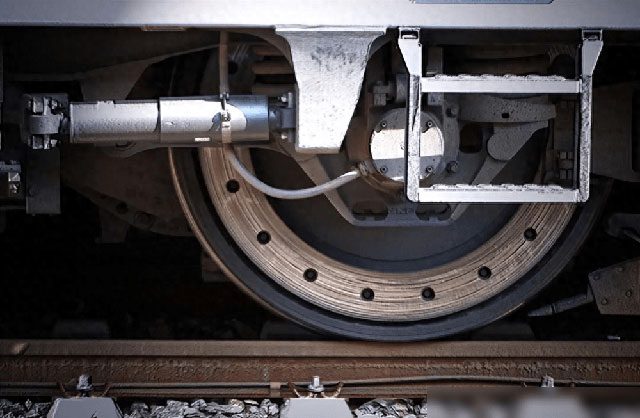You may have wondered why sand is sprayed onto the tracks when trains are in motion. This seemingly simple act plays a crucial role in ensuring the safety of both the train and its passengers.
In train operations, ensuring safety and efficiency is always the top priority. One of the important measures to achieve this goal is spraying sand onto the tracks while the train is running. While it may sound straightforward, sand is essential for enhancing friction between the train wheels and the tracks, especially in harsh weather conditions such as rain, ice, and snow.

Air and oil on the track surface, along with the effects of ice and snow in rainy or snowy conditions, make the tracks slippery. This poses significant dangers when trains are in motion, including the risk of derailment and accidents.
Spraying sand helps create an additional layer of friction between the train wheels and the tracks, ensuring safety during the journey.
As the train runs, the wheels make direct contact with the track surface, generating frictional force. This friction is necessary to prevent the train from slipping and to ensure it can stop safely when needed. However, in some cases, the friction can be either too high or too low, leading to various issues.
Excessive Friction
When a train is running too fast or performs emergency braking, the friction between the wheels and the tracks can become excessive. This may cause the train wheels to lock up, generating strong friction that can lead to severe damage to both the tracks and the train.
Insufficient Friction
Conversely, during rainy or snowy weather, the track surface becomes slippery due to water and ice. This significantly reduces the friction between the train wheels and the tracks, increasing the risk of wheel slip and making it difficult to control the train’s speed. In such situations, spraying sand onto the tracks is an effective measure to enhance friction and ensure safety.

To counteract the reduced friction, sand is used to enhance grip between the wheels and the tracks.
Train Wheel Design
The design of the train wheels also plays an important role in maintaining friction. Train wheels consist of a rim and a tire-like ring. Some modern trains have wheel surfaces that integrate iron wheel structures, which can improve friction between the train and the tracks and reduce transportation costs. Meanwhile, older trains use iron rings and tires to create friction and prevent derailment.

Sand is sprayed onto the tracks using equipment mounted on the locomotive or railcar. As the wheels roll over the sand, the sand particles adhere to the surfaces of the wheels and the tracks, creating greater friction. The increased friction helps ensure the train operates safely, especially in poor weather conditions or during emergency braking.
The tire surface of the wheels helps create a small sliding friction between the wheels and the tracks, allowing for smoother train movement. However, this sliding friction also creates resistance, slowing the train’s speed. According to Newton’s third law, the backward friction creates a motion force between the tracks and the wheels, helping to keep the train stable.

The use of sand has been proven effective in enhancing the friction between trains and tracks.
Why Is Sand Sprayed During Rain or Snow?
In wet weather conditions, water molecules in the air easily form a thin water film on the metallic surface of the tracks. This film reduces the friction between the wheels and the tracks, causing the wheels to slip. When this phenomenon occurs, the friction decreases significantly, leading to a risk of wheel slip and difficulty in controlling the train.
To counteract this situation, dry sand is sprayed onto the tracks. The coarse sand particles create higher friction, helping to enhance the grip between the wheels and the tracks. This ensures that trains can operate more safely in harsh weather conditions.

Spraying sand onto the tracks is a crucial measure for ensuring safety in railway operations. The use of sand increases friction between the train and the tracks, especially in adverse weather conditions or during emergency braking.
Calculating Friction Force After Sand Spraying
The friction force is calculated using the formula F = μN, where F is the friction force, μ is the coefficient of friction, and N is the normal force. In this case, the normal force is the force exerted on the tracks and the wheels. According to typical calculations, the maximum normal force can reach 198 kN, and the maximum constant horizontal force of the tire is 106 kN.
With a coefficient of friction for sand at approximately 1.7, the maximum horizontal friction force of the wheels after sand spraying will be 106 kN * 1.7 = 180.2 kN. This shows that spraying sand significantly increases the friction force, ensuring the safety of trains under harsh operating conditions.

Spraying sand onto the tracks helps reduce the risk of wheel slip and accidents.
Spraying sand onto the tracks while the train is running is an important measure to ensure safety and efficiency in train operations. Sand helps enhance the friction between the wheels and the tracks, especially in rainy, snowy, and icy conditions. As a result, the risk of wheel slip and accidents is minimized, ensuring the safety of passengers and cargo aboard the train.





















































